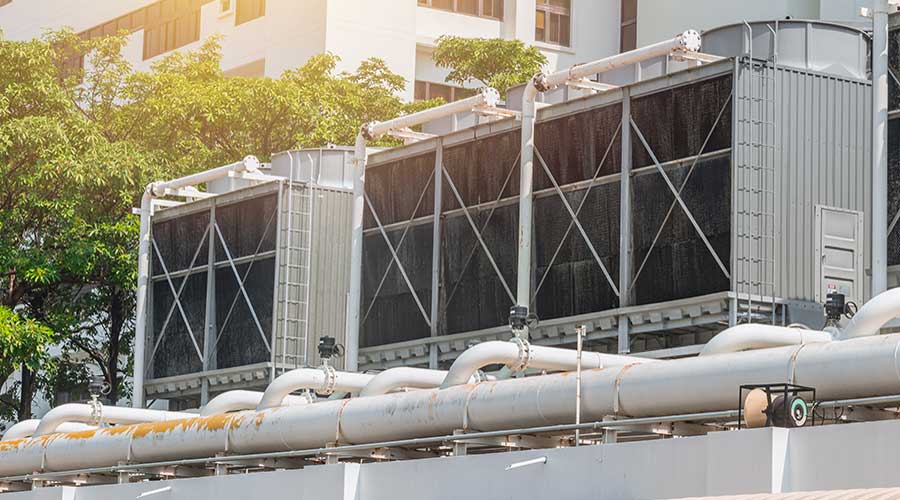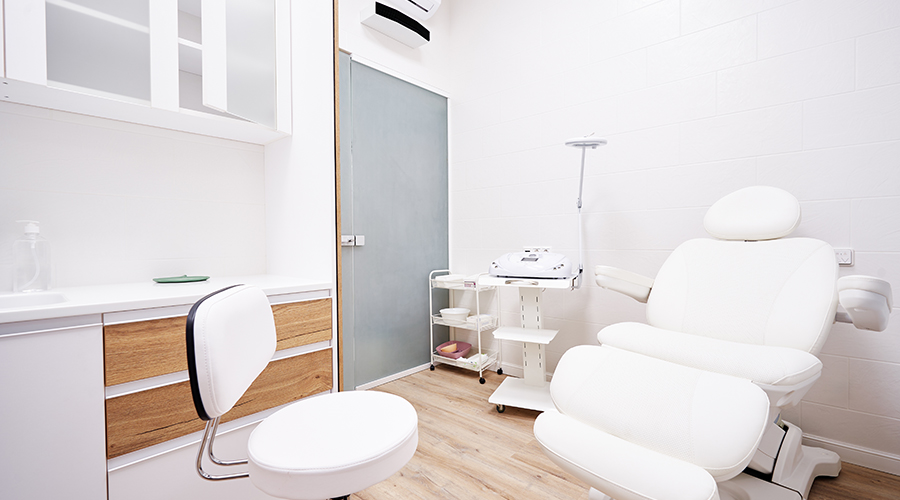Sustainability remains a high priority in facilities healthcare facilities, but that priority can come with a hefty price tag. Over the last two years, facilities managers have been tasked with improving indoor air quality (IAQ) due to the COVID-19 pandemic while finding solutions that do not compromise the organization’s sustainability mission. What can seem like an impossible task can be plausible. Healthcare Facilities Today talks with Christopher Roman, director of business development energy manager at Conservant Systems on ways facilities managers can improve IAQ while reducing energy use.
Healthcare Facilities Today: What are the major pieces of equipment that tend to cost facilities the most money? How can this be reduced?
Roman: Chillers, pumps, air handling units (AHU), and boilers are the major pieces of HVAC equipment that cost hospitals the most in operational costs. These pieces of equipment are often located in the central plant. . Energy audits are the first key to reducing your operational costs. The types of energy audits that everyone should be looking to obtain are ASHRAE Level 1 and Level 2 energy audits. Level 1 audits range from 8 cents per square foot to 15 cents per square foot. A Level 2 audit ranges from 15 cents per square foot to 25 cents per square foot. On a 100,000-square-foot facility, a level 1 and 2 ASHRAE audit would run $23,000 on the low end and $40,000 on the high end. These necessary auditing costs will most likely be recouped in the energy savings measures derived. However, there may be no need to pay for energy audits depending on your local utility. For example, San Diego Gas & Electric offers a no-cost comprehensive audit program where you receive ASHRAE Level 1 and Level 2 audits. If you are interested in an energy audit of any type, I would encourage you to contact your local utility account representative and inquire about what customer audit programs may be available. Chances are they will have something to get you on the right track.
HFT: Why do you think more companies are turning to their HVAC systems to try to reduce energy? How does this impact critical facilities like hospitals or other healthcare facilities?
Roman: Many companies are turning to their HVAC systems to try to reduce energy costs due to the rise in the cost of energy. When addressing the internal cost centers that pay for the utilities (electric, gas, and water), there has been a constant need to increase these budgets yearly. Typical escalation rates of 2 or 3 percent are now being raised to 8-10-plus percent respectively. Any time a budget drastically increases, it will receive special attention within that business model. These increases hit hospitals and other healthcare facilities especially hard. Performing medical and science-related tasks are very energy-intensive. Think of MRI machines, x-ray machines, lab testing, etc. They all have heavy electrical power draws and produce a lot of heat that needs to be removed from the facilities in which they operate. This, in turn, puts a higher load on the HVAC systems. Therefore, as energy costs rise over time, this puts a heavy burden on the profitability of these institutions. One economic principle that we all understand is that when the cost of producing goods or services rises, those costs are traditionally passed on to the consumer. This creates a heavy burden on the healthcare industry as well as the healthcare consumer. So finding ways to reduce energy is a natural way of trying to keep a market stable and, in the case of healthcare, keeping the patient experience and quality of care as high as possible.
A recent example of the installation of a very high-performance AHU is shown in the accompanying picture. This unit is a high-efficiency dehumidification system serving a Southern California museum. It is a public museum, but it was designed to meet the very stringent requirements of hospital operating rooms, with a capture-or-kill rate of over 99.99 percent for COVID-19-sized submicron particles. It serves the occupied spaces of this world-class fine arts museum with this highly purified air, precise temperature and relative humidity control to protect both the patrons and the centuries-old artwork and artifacts. The museum design and construction team evaluated a multitude of options and selected this equipment for air purity, energy conservation, decarbonization, and low maintenance as their main reasons. The system has been running at average energy reductions exceeding 60 percent since startup and has essentially eliminated the need for carbon-based fuel for the HVAC dehumidification and reheat process, as it uses recaptured energy as the heat source.
The system was installed to replace the existing AHU that had reached the end of its useful life and had the lowest overall cost of any of the options that provided similar performance enhancements.
HFT: How can FMs address IAQ problems without breaking the bank? What do they risk if they delay maintenance?
Roman: The key to minimizing your costs with IAQ is getting to the root of the problem before it becomes a problem. To do so, you must go through detailed audits of your existing AHUs. In the auditing of these units, you would want to understand how the filtering is performing, record how many pre and after filters you have, what micron levels they filter to, what the face velocities are of your unit and the individual filter types, and you would want to assess how frequently you are maintaining these units. Compiling the information into a matrix and crossing the information with the criticality of the zones they serve will help to highlight any low-hanging fruit to attack.
Once IAQ problems develop, they can be extremely costly to deal with. Think of mold removal or lawsuits from sick building syndrome that may result in class action lawsuits, etc. Therefore, it becomes very advantageous to invest the money upfront for additional man-hours or contractors to perform the investigation necessary to detect any degradation before it becomes a full blow problem. The best safety net you can create for your facilities is being methodically proactive and communicating to folks that control the purse strings the costs and benefits of investing in capital projects that reinforce the IAQ needed to keep your business model protected and running smoothly.
One of the easiest but most costly maintenance items to forgo is the regular changing of the air filter systems. If the air filter change interval is too long and the filters don’t have adequate surface area for this duty, the filters can load up with dirt, and the air pressure drop can collapse one or more filters, effectively creating a gap for unfiltered air to pass into the AHU, the downstream duct systems and the facility. Biological growth can rapidly occur, and biological pathogens can rapidly spread around a facility.
Mackenna Moralez is the associate editor for the facility market.

 Social Media Driving Rise in Trade Jobs
Social Media Driving Rise in Trade Jobs North Carolina Children's Receives $25M Gift from Coca-Cola Consolidated
North Carolina Children's Receives $25M Gift from Coca-Cola Consolidated Swinerton Breaks Ground on $5.5M Medical Office Building in North Carolina
Swinerton Breaks Ground on $5.5M Medical Office Building in North Carolina Rethinking Strategies for Construction Success
Rethinking Strategies for Construction Success From Touchless to Total Performance: Healthcare Restroom Design Redefined
From Touchless to Total Performance: Healthcare Restroom Design Redefined